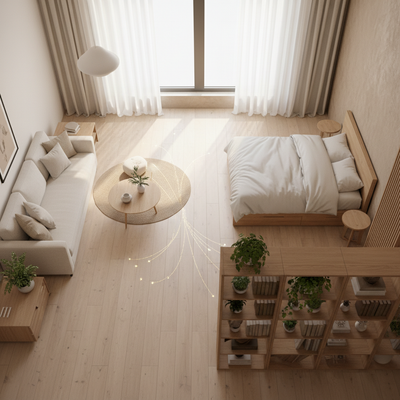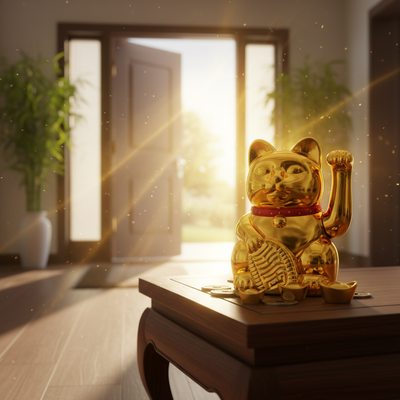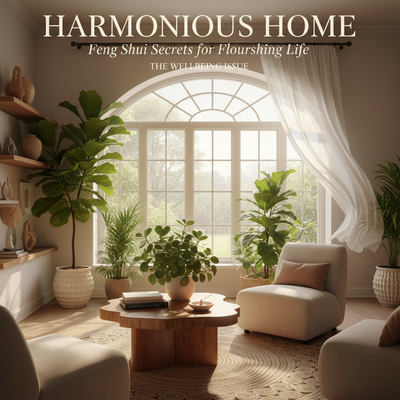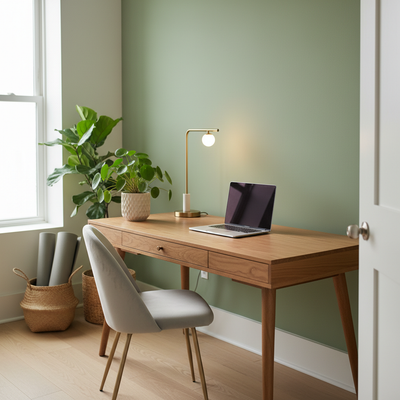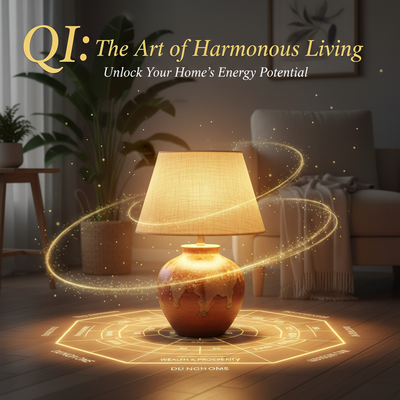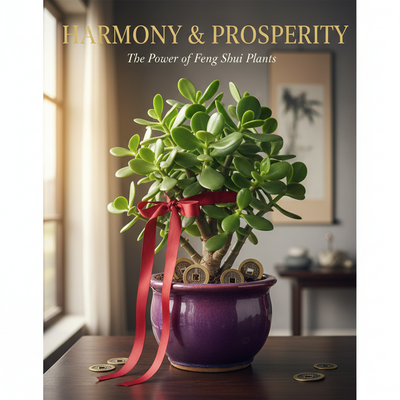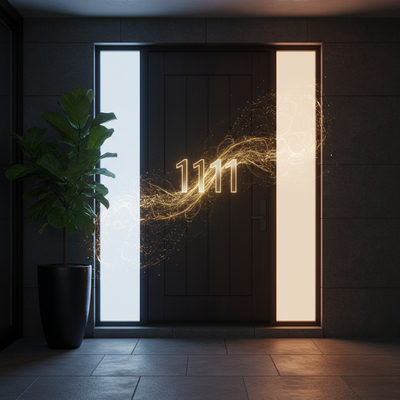Introduction
Your home's border is more than just a wall or barrier; it's the first protection for your home's energy, called Qi. It's the first thing your home shows to the world and to the energy that moves toward it. Many homeowners think about decorating inside their homes, but the key to a truly peaceful space starts at your property edge. This guide will teach you everything you need to know to pick a fence color that not only looks great but also brings better balance, protection, and success to your family.
So, what is the best feng shui fence color? While there's no single "perfect" color for everyone, the best feng shui fence color is one that works well with the direction it faces and the type of energy you want to create. It's a personal choice based on specific rules you can learn. We will show you exactly how to figure this out for your own home, helping you make a choice that matches your goals and creates a helpful, lively environment from the outside in.
Why Your Fence Color Is Important

To understand why a simple can of paint can make such a big difference, we need to look at two main ideas of feng shui: managing Qi and how color affects energy. Your fence is not just something that sits there; it's an active tool in shaping your home's future. This section will explain why this choice matters so much.
The Fence as Protector
In feng shui, a fence creates your property's energy space. Think of it as the protector of your home. Its main job is to keep and build up the positive, life-giving energy (Sheng Qi) within your space while at the same time pushing away or slowing down any harsh, fast-moving, or negative energy (Sha Qi) from the outside world.
A well-kept fence works like the cover of a book. It protects the valuable contents—your family and your life story—while setting the mood for what to expect inside. A strong, complete fence gives a feeling of safety and clear boundaries. A broken or ignored fence, on the other hand, suggests that the energy within is leaking out and that the home is open to outside stress. The color of this protector is its uniform, showing its specific purpose and strength.
How Color Affects Qi
Color is not just a decorating choice; it is a living, breathing form of energy. In the language of feng shui, colors are the most direct and powerful forms of the Five Elements: Wood, Fire, Earth, Metal, and Water. Each color vibrates with a unique frequency and carries a specific quality of energy that affects our feelings, thoughts, and the opportunities that flow into our lives.
When you paint your fence, you are filling your property's boundary with the special energy of that color's element. This is a powerful statement of purpose. The right feng shui fence color can:
- Bring positive opportunities and helpful energy into your life.
- Protect your home and family from outside negative influences or energy drains.
- Balance the elemental energies of your property, creating a more peaceful environment.
- Support the specific life goals of the people living there, whether related to career, family, health, or wealth.
The Five Elements and Colors
To choose the right color, we must first understand this elemental "dictionary." Each element controls specific colors and types of energy. Knowing these connections is the key to unlocking the power of your fence.
The Wood Element
- Colors: All shades of Green and Brown.
- Energy: Wood represents the energy of growth, life, and expansion. It is connected with new beginnings, healing, flexibility, and strengthening family bonds. A wood-element fence promotes a feeling of life and renewal.
- Best for: Building creativity, supporting physical and financial growth, and improving family harmony. It's a natural choice for a garden setting with lots of plants.
The Fire Element
- Colors: Red, strong Yellow, Orange, Purple, and Pink.
- Energy: Fire is the element of passion, expression, and social recognition. It's a high-energy, expanding force that relates to fame, inspiration, and celebration. It brings warmth and excitement.
- Note: Fire colors are extremely powerful and should be used carefully on large surfaces like a fence. They can easily become too much and create feelings of stress or anger if not balanced. They are often better used as accents on a gate or mailbox rather than for the entire fence.
The Earth Element
- Colors: Light Yellow, Sandy Tones, Beige, and other earthy colors.
- Energy: The Earth element is all about stability, grounding, and nourishment. It provides a sense of security, supports self-care, and builds stable, caring relationships. An Earth-colored fence makes a home feel safe and protected.
- Best for: Creating a sense of security, supporting overall health and well-being, and grounding the energy of a property, especially for families.
The Metal Element
- Colors: White, Gray, Silver, and other Metallics.
- Energy: Metal represents precision, clarity, and efficiency. Its energy is about organization, logic, communication, and integrity. It also relates to joy and attracting helpful people or supporters into your life.
- Best for: Improving mental sharpness, better organization, attracting helpful people, and supporting the energy related to children and creativity.
The Water Element
- Colors: Black and Dark Blue.
- Energy: The Water element is connected to wisdom, deep thinking, and the flow of life. It controls your career path, social connections, and the journey of abundance. Water is deep, quiet, and powerful.
- Note: Black is a very strong color in feng shui. While it can powerfully support career energy, a large black fence can feel heavy, imposing, or draining if not balanced with other elements in the landscape. It works best when contrasted with vibrant life, such as bright green plants.
Quick-Reference Guide
This table provides a simple summary of the elements and their matching energies to help you in your selection process.
| Element | Colors | Energy & Keywords |
|---|---|---|
| Wood | Green, Brown | Growth, Healing, Family, New Beginnings |
| Fire | Red, Orange, Purple | Passion, Recognition, High Energy |
| Earth | Yellow, Beige, Sandy | Stability, Grounding, Nurturing |
| Metal | White, Gray, Metallics | Clarity, Precision, Joy, Helpful People |
| Water | Black, Dark Blue | Wisdom, Career, Flow, Abundance |
Choosing Your Fence Color
Now that you understand the "what" and "why," it's time for the "how." This step-by-step process will guide you in applying these ideas directly to your own home, making sure you make a confident and energetically correct choice.
Step 1: Find the Direction
The most important factor in choosing your fence color is the compass direction it faces. Each direction is controlled by one of the Five Elements, and the color you choose should support that directional energy.
To do this, stand at your front door looking out toward the street. Use a reliable compass—either a physical one or a compass app on your smartphone—to figure out the direction your front fence faces (e.g., North, Southwest, East). If you have a large property with other important fence lines, such as a back fence that borders a forest or another property, you may want to figure out its direction as well. For most homes, the front-facing fence is the most important as it controls the main energy entering your property.
Step 2: Match Direction to Element
Once you have your compass direction, you can match it to its controlling element. This connection is a basic part of feng shui analysis and cannot be changed.
- North: Water Element
- Northeast: Earth Element
- East: Wood Element
- Southeast: Wood Element
- South: Fire Element
- Southwest: Earth Element
- West: Metal Element
- Northwest: Metal Element
This list is your cheat sheet. For example, if your fence faces East, its natural energy is that of the Wood element. If it faces Southwest, its energy is Earth.
Step 3: Apply Elemental Cycles
With your direction and its element identified, you can now select a color. In feng shui, elements interact in predictable cycles. For choosing a color, we focus on two harmonious cycles.
-
Nourishing Cycle (Recommended): This is the most supportive and harmonious approach. You choose a color from the element that creates or feeds the direction's element. For example, Water nourishes Wood, so a Water-element color (black) is excellent for a Wood-direction (East) fence. This creates a gentle, productive energy flow.
-
Same Element Cycle (Good Alternative): You can also use a color that is the same as the direction's element. For example, using a Wood-element color (green) on a Wood-direction (East) fence. This strengthens the existing energy of that sector.
The following table makes this simple. Find your fence's direction, and it will show you the most harmonious color choices based on these cycles.
| Fence Direction | Governing Element | Harmonious Colors (Nourishing Cycle) | Good Colors (Same Element) |
|---|---|---|---|
| North | Water | Metal (White, Gray) | Water (Black, Blue) |
| East / Southeast | Wood | Water (Black, Blue) | Wood (Green, Brown) |
| South | Fire | Wood (Green, Brown) | Fire (Red, Orange - use as accent) |
| Southwest / Northeast | Earth | Fire (Subtle Reds, Pinks, Purples) | Earth (Beige, Sandy) |
| West / Northwest | Metal | Earth (Beige, Sandy) | Metal (White, Gray) |

Using this table, if your fence faces West, its controlling element is Metal. The most harmonious choice would be an Earth element color (like beige or sandy tones) because Earth produces Metal. A good alternative would be a Metal element color itself (white or gray).
Beyond the Basics
True feng shui mastery lies in seeing how all things connect. Your fence color doesn't exist by itself. To create real harmony, we must think about how the color works with the fence's material and the surrounding landscape. This complete approach elevates your choice from simply "correct" to truly powerful.
Working Together: Color and Material
The material of your fence already has an elemental energy. Your color choice can either work well with it or create a dynamic of control.
-
Wood Fences (Wood Element): A wooden fence is naturally aligned with the Wood element. Staining it with a brown (Wood) or black (Water, which nourishes Wood) is a naturally harmonious choice. If you paint a wood fence white (Metal), you are creating a "controlling" dynamic, as Metal chops Wood in the elemental cycle. This isn't necessarily "bad"—it can be used strategically to cut through stuck energy—but it should be done with clear intention.
-
Metal Fences (Metal Element): Wrought iron or aluminum fences are of the Metal element. They are perfectly suited for Metal colors (white, gray) or Earth colors (beige), which produce Metal. Painting a metal fence a Fire color like red can be problematic from a purely elemental standpoint, as Fire melts Metal, creating a conflicting energy.
-
Vinyl/Composite Fences (Neutral): These modern materials are considered elementally neutral. This gives you the most freedom, as the color you apply becomes the main elemental influence. The fence acts as a blank canvas for your energetic intention.
Working with Your Garden
Your fence is a key part of your garden's ecosystem. The goal is to create a visual and energetic conversation between your fence, your plants, and your home.
A green fence (Wood Element) beautifully supports a lush, vibrant garden, creating a smooth transition from the boundary to the yard. It builds the energy of healthy growth for your plants.
A black fence (Water Element) is a designer's secret weapon. It creates a stunning, background that makes the green leaves and colorful flowers in front of it appear more vibrant and alive. Energetically, the Water element of the black fence nourishes the Wood element of the plants, helping them thrive.
An earthen or beige fence (Earth Element) provides a stable, grounding background. It complements both plant life and hardscaping features like stone patios or walkways, creating a calm and secure feeling. The goal is complete harmony, not just a "correct" fence color by itself.
A Real-World Example
Abstract principles come to life when we see them in action. At our consultancy, we frequently help clients transform their home's energy starting from the outside. This story shows how a thoughtful fence color change, guided by expert principles, can create a powerful and real shift.
The Challenge
A client approached us feeling "stuck" in their career and noted that their home felt unwelcoming and stagnant from the street. They had lived in the house for years, but new opportunities seemed to pass them by. During our consultation, we observed their property had a drab, peeling dark brown fence that faced directly North.
Our Team's Analysis
The QI FLOW team immediately identified the energetic conflict. The North direction controls one's Career and Life Path and belongs to the Water element. The existing drab brown fence represented weak, dying Wood energy. In the five-element cycle, Wood drains Water to survive. Therefore, the fence was actively draining the energy from the client's career sector, reinforcing the feeling of being stuck and depleted. The poor condition of the fence only made this draining effect stronger.
Our recommendation was based on the nourishing cycle. To revitalize the Water element of the North, we needed to introduce the element that creates it: Metal. We advised the client to repair the fence and paint it a crisp, clean off-white (a Metal element color). This choice was designed to actively feed and nourish the Water energy, thereby revitalizing the flow of opportunities associated with their career. As an additional layer of support, we suggested planting a few low-maintenance shrubs with deep blue flowers (Water element) along the fence line to further strengthen the sector.
The Result
The transformation was immediate and profound. Visually, the new white fence brightened the entire front of the property, making it feel more expansive, cared for, and welcoming. Energetically, the shift was just as significant. The client reported feeling a renewed sense of clarity and purpose within weeks. Shortly after, a previously stalled project at work gained momentum, and a new professional opportunity unexpectedly emerged. This case study shows how a simple, informed change can powerfully realign the energy supporting your life's goals.
Common Mistakes to Avoid
Just as the right color can be helpful, the wrong one can create unintended friction. Here are a few common mistakes to steer clear of to ensure your efforts are successful.
-
Avoid Overwhelming Fire: Do not paint a large fence bright red, especially if it does not face South. On a large scale, this highly active energy can create a feeling of aggression, anxiety, or conflict for the home's occupants.
-
Avoid a "Clashing" Combination: Do not use a color from an element that "destroys" or "controls" the directional element in a harsh way. For example, avoid red (Fire) on a West-facing fence (Metal), as Fire melts Metal. This creates a stressful, conflicting energy at your boundary.
-
Don't Ignore Condition: Remember that a "perfect" feng shui color on a broken, peeling, or dirty fence is ineffective. The energy of decay and neglect will always override the positive energy of the color. Maintenance is just as important as the color itself.
Conclusion
Choosing your feng shui fence color is a meaningful act of intention. It's an opportunity to define how your home meets the world and to build the specific energies you want to attract into your life. By understanding the Five Elements, identifying your fence's direction, and applying the harmonious elemental cycles, you can create a boundary that not only protects but also nurtures and supports you.
Your home's exterior is a direct reflection of your inner world and your goals. With this guide in hand, you are now equipped to make an expert choice—one that brings not just curb appeal, but also a deep sense of beauty, harmony, and supportive energy to your life for years to come.
